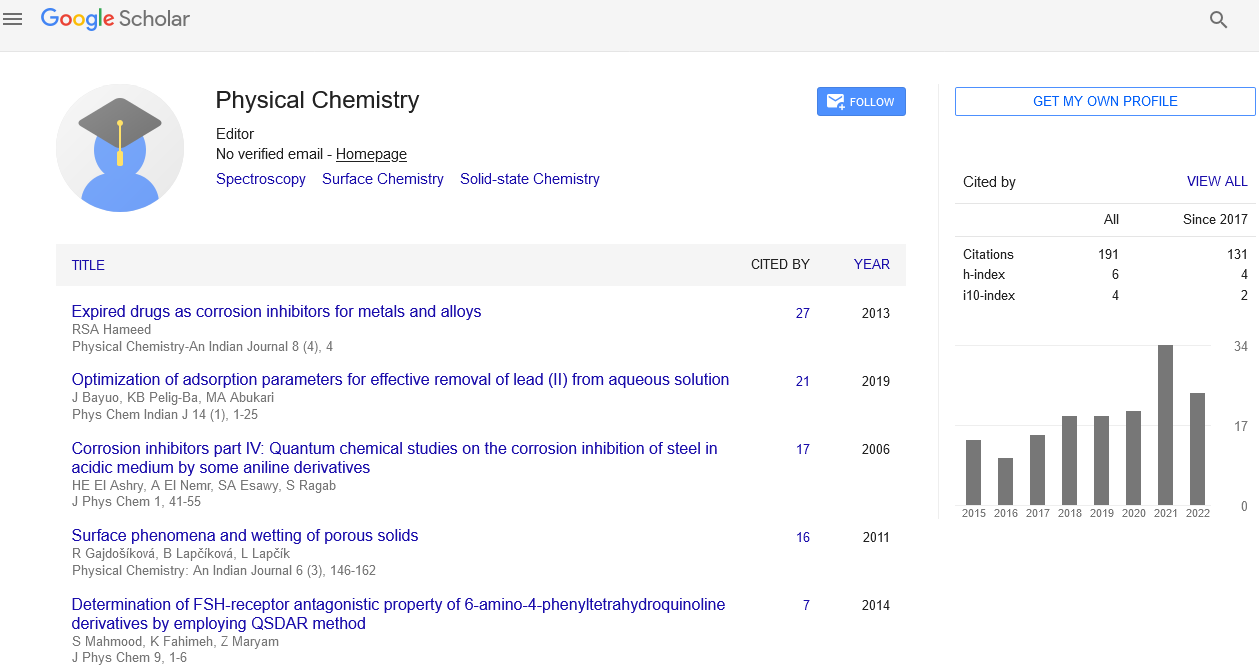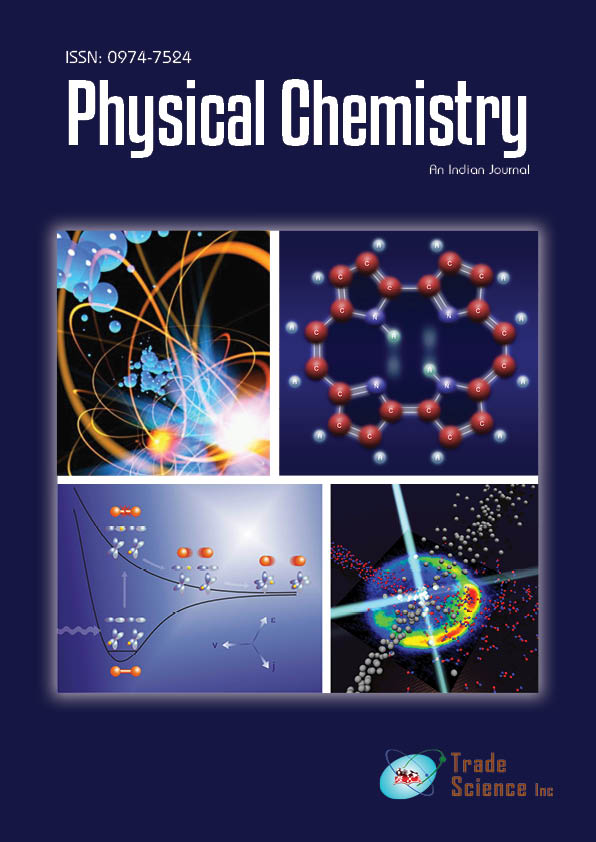Editorial
, Volume: 17( 2)Adsorption of Mg2+ and Pb2+ Ions by Using the Synthetic Modified Tannin: A Kinetic Study
Statistical Thermodynamics Stefan Paul* Editorial office, Physical Chemistry:An Indian Journal, UK * Corresponding author: Stefan Paul, Editorial Office, Physical Chemistry:An Indian Journal, UK, E-mail: physicalchem@journalres.com Received: July 10, 2021; Accepted: July 16, 2021; Published: July 26, 2021
Abstract
Sulfonated-Tannin phenol Formaldehyde resin obtained from flower buds of Terminalia chebula was used to adsorb Mg2+ and Pb2+ from aqueous solutions under different pH. Their adsorption equilibrium, adsorption kinetics were investigated. This study indicated that pH had effect on the adsorption isotherms. Except for low cation concentrations, for which adsorption was high at initial pH 5.5 for Pb2+ and pH 8.3 for Mg2+. The adsorption kinetics showed hyperbolic dependence of the proportion of cation adsorbed on time and adsorption isotherms were satisfactorily fitted by Freundlich equations, with K and N values showing Pb2+ to be more efficiently adsorbed than Mg2+.
Editorial Statistical thermodynamics is an important link between quantum theory and chemical thermodynamics, yet it is a difficult subject for students to grasp. Statistical thermodynamics is a theory that predicts the behaviour of macroscopic amounts of molecules using molecular attributes. While statistical thermodynamics predates quantum physics, current statistical thermodynamics presume that the quantized energy levels associated with a given system are known. The partition function, a temperature-dependent quantity, can be determined using these energy-level data. All of the system's thermodynamic properties can be computed using the partition function. The general challenge of forecasting reaction rates has also been tackled using statistical thermodynamics. Transition state theory, sometimes known as the theory of absolute reaction rates, is the name given to this application. We should be able to anticipate the rate of any response in principle. Statistical thermodynamics, of which Boltzman is one of the most well-known fathers, looks at the universe on a tiny, atomic size and seeks to understand phenomena that classical thermodynamics only looked at on a macroscopic basis. Statistical thermodynamics, unlike classical thermodynamics, requires additional assumptions for an adequate modelling of matter. The idea of temperature is given a molecular meaning (related to the average energy of a molecule in a piece of matter) by statistical thermodynamics, whereas the concept of entropy is simplified by its statistical meaning. A lot of unreasonable assumptions regarding protein sequences are made in the statistical thermodynamic treatment above. Residues are "equilibrated" across an MSA, which is one of the most unrealistic assumptions. This is definitely not the case; rather, these sequences all descend from a common ancestorf, with sequence differences resulting from selective pressure and genetic drift. A lot of unreasonable assumptions regarding protein sequences are made in the statistical thermodynamic treatment above. Residues are "equilibrated" across an MSA, which is one of the most unrealistic assumptions. This is definitely not the case; rather, these sequences all descend from a common ancestor, with sequence differences resulting from selective pressure and genetic drift. The solvation free energy is used in statistical thermodynamics to quantify the impact of the solvent on the stability and reactivity of the solute. This is the reversible work that occurs when a solute molecule is transferred from a dilute gas to a solution system of interest, and it corresponds to the free-energy change for turning on the intermolecular interaction of the solute with the solvent. The probability distribution is a function only of preserved attributes, which is a sufficient (but not www.tsijournals.com | July-2021 2 necessary) requirement for statistical equilibrium with an isolated system (total energy, total particle numbers, etc.). There are a variety of equilibrium ensembles to explore, but only a few of them relate to thermodynamics.

